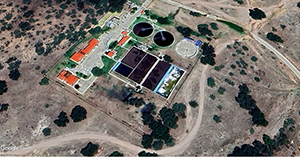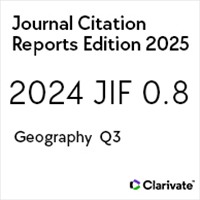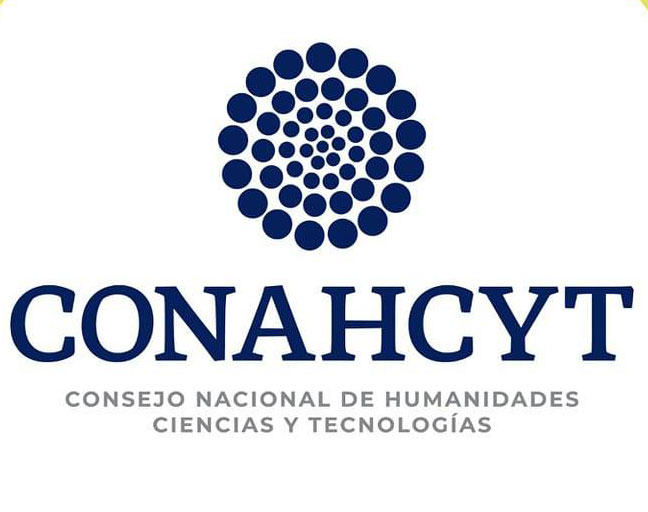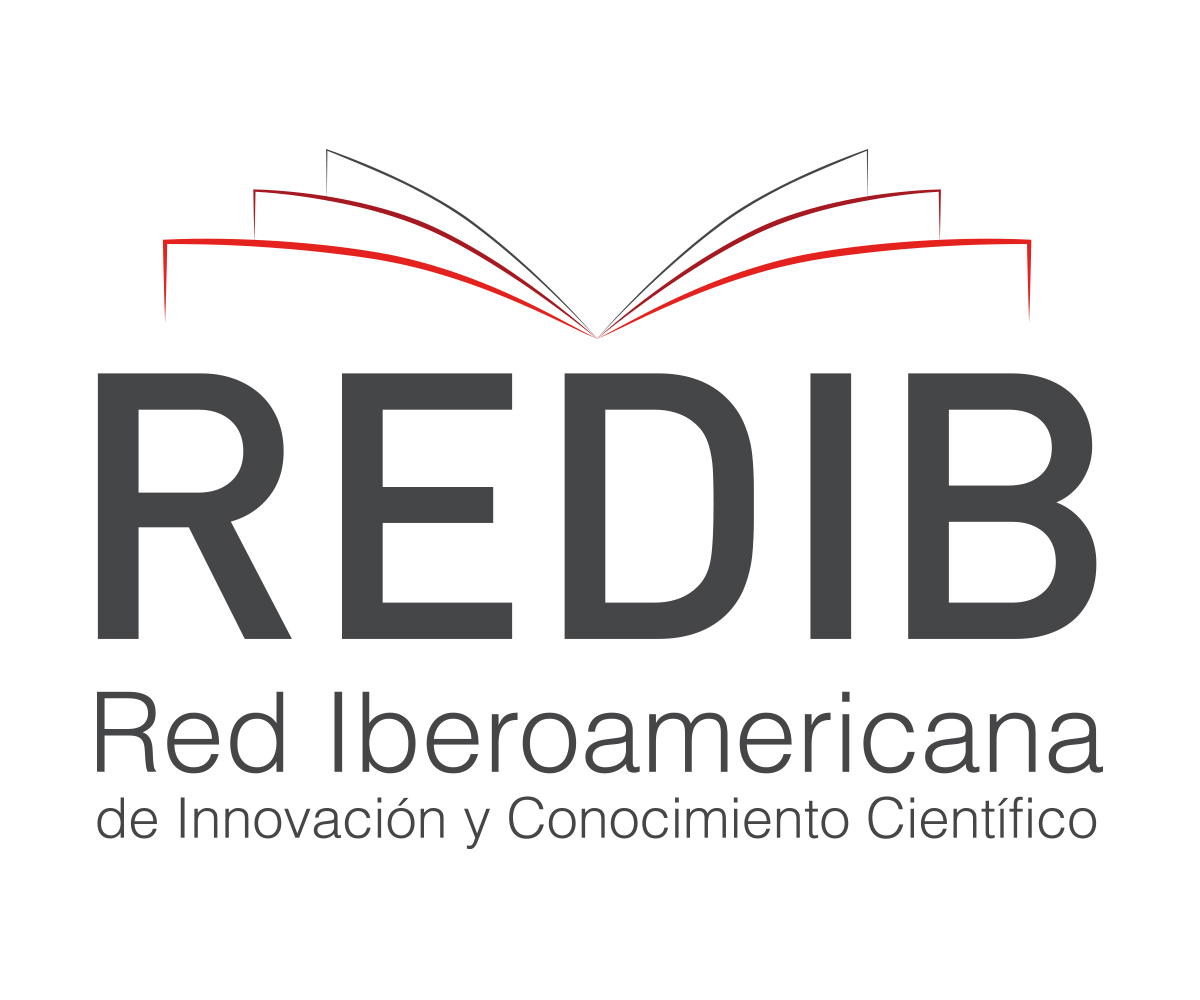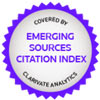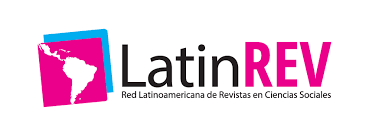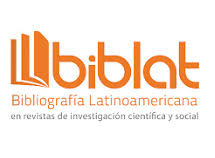Programas de saneamiento urbano en la frontera norte de México y el enfoque de economía circular
Urban sanitation programs on Mexico’s northern border and the circular economy approach
https://doi.org/10.21670/ref.2419155
Palabras clave:
saneamiento urbano, frontera norte de México, estrategias de economía circular, infraestructura, T-MECResumen
En este artículo se analizan el Programa de saneamiento de la frontera norte estudio gran visión y el Programa estratégico de saneamiento de la frontera norte, ambos se formularon luego de la introducción del capítulo ambiental del T-MEC en 2020. Se examinan tres casos relevantes de ciudades fronterizas: Tijuana, Baja California; Nogales, Sonora; y, Nuevo Laredo, Tamaulipas. La investigación se basa en una revisión documental y entrevistas a informantes clave. Se encontró que las soluciones propuestas se apoyan principalmente en el desarrollo de infraestructura convencional, con una incorporación limitada de estrategias de reutilización, reciclaje y recuperación de materiales, energía y agua. El estudio enfatiza la importancia de una planeación que incorpore principios de economía circular y formas de infraestructura verde para mejorar la sostenibilidad de los proyectos de saneamiento en la región.Abstract This study looks at the Northern border sanitation program gran vision study and the Northern border strategic sanitation program both programs were formulated after introducing the environmental chapter of the USMCA in 2020. The study examines three relevant cases of border cities: Tijuana, Baja California; Nogales, Sonora; and, Nuevo Laredo, Tamaulipas. The research is based on a documentary review and interviews with key informants. The study found that the proposed solutions were mainly based on conventional infrastructure projects, with limited incorporation of reuse, recycling and recovery strategies for materials, energy and water. The study emphasizes the importance of holistic planning that incorporates circular economy principles and green infrastructure to improve the sustainability of sanitation projects in the region.
Citas
Aguilar-Benitez, I. & Blanco, P. A. (2018). Recuperación de metano y reducción de emisiones en PTAR Nuevo Laredo, Tamaulipas, México. Tecnología y Ciencias del Agua, 9(2), 86-114. https://revistatyca.org.mx/index.php/tyca/article/view/1672 DOI: https://doi.org/10.24850/j-tyca-2018-02-04
Allen, L. (2020). Cleaning up the United States-Mexico border: North American Development Bank’s efforts to close the wastewater infrastructure gap. Electronic Green Journal, 1(44). https://doi.org/10.5070/G314448233 DOI: https://doi.org/10.5070/G314448233
Banco de Desarrollo de América del Norte (BDAN). (2021, 3 de diciembre). Supporting a healthy environment & green growth in the U.S.-Mexico border region. Expanded project eligibility. https://www.nadb.org/uploads/files/expanded_project_eligibility.pdf
Banco de Desarrollo de América del Norte (BDAN), Comisión Nacional del Agua (Conagua) & Comisión Estatal de Servicios Públicos de Tijuana (CESPT). (2015, 22 de septiembre). Identificación de alternativas de tratamiento y disposición final de las aguas residuales y evaluación del uso del agua subterránea del acuífero de Tijuana. https://www.epa.gov/sites/default/files/2015-10/documents/presentacion_reuso_tijuana.pdf
Castellet-Viciano, L., Hernández-Chover, V. & Hernández-Sancho, F. (2022). The benefits of circular economy strategies in urban water facilities. Science of the Total Environment, 844, Artículo 157172. https://doi.org/10.1016/j.scitotenv.2022.157172 DOI: https://doi.org/10.1016/j.scitotenv.2022.157172
Comisión Internacional de Límites y Aguas (CILA). (2021a). Formulación del Programa de saneamiento de la frontera norte a nivel gran visión (CILA-JUA-LPN-6-2020. Informe final). Comisión Internacional de Límites y Agua / FG y asociados. http://www.cila.gob.mx/syca/SUIF/PSFN_IF00_General_00_Informe.pdf
Comisión Internacional de Límites y Aguas (CILA). (2021b). Formulación del Programa de saneamiento de la frontera norte a nivel gran visión (CILA-JUA-LPN-6-2020. Tijuana, Baja California. Informe especial). Comisión Internacional de Límites y Agua / FG y asociados. http://www.cila.gob.mx/syca/SUIF/PSFN_IF01_Tijuana_A_Informe.pdf
Comisión Internacional de Límites y Aguas (CILA). (2021c). Formulación del Programa de saneamiento de la frontera norte a nivel gran visión (CILA-JUA-LPN-6-2020, Nogales, Sonora. Informe especial). Comisión Internacional de Límites y Agua / FG y asociados. http://www.cila.gob.mx/syca/SUIF/PSFN_IF05_Nogales_A_Informe.pdf
Comisión Internacional de Límites y Aguas (CILA). (2021d, agosto). Formulación del Programa de saneamiento de la frontera norte a nivel gran visión (CILA-JUA-LPN-6-2020, Nuevo Laredo, Tamaulipas. Informe especial). Comisión Internacional de Límites y Agua / FG y asociados. http://www.cila.gob.mx/syca/SUIF/PSFN_IF12_NLaredo_A_Informe.pdf
Comisión Internacional de Límites y Aguas (CILA). (2024, 12 de marzo). Programa de saneamiento de la frontera norte a nivel gran visión: un instrumento de México para el cumplimiento de las normas de saneamiento y sus compromisos binacionales. Comisión Internacional de Límites y Agua / FG y asociados. Recuperado el 22 de abril de 2024, de https://cila.sre.gob.mx/cilanorte/index.php/boletin/114-saneamiento-calidadagua
Comisión Nacional del Agua (Conagua). (2021a). Programa hídrico regional 2021-2024. Región hidrológico-administrativa I península de Baja California. Secretaría de Medio Ambiente y Recursos Naturales-Gobierno de México. https://files.conagua.gob.mx/conagua/generico/PNH/PHR_2021-2024_RHA_I_Pen%C3%ADnsula_de_Baja_California.pdf
Comisión Nacional del Agua (Conagua). (2021b). Programa hídrico regional 2021-2024. Región hidrológico-administrativa II noroeste. Secretaría de Medio Ambiente y Recursos Naturales-Gobierno de México. https://files.conagua.gob.mx/conagua/generico/PNH/PHR_2021-2024_RHA_II_Noroeste.pdf
Comisión Nacional del Agua (Conagua). (2021c). Programa hídrico regional 2021-2024. Región hidrológico-administrativa VI río Bravo. Secretaría de Medio Ambiente y Recursos Naturales-Gobierno de México. https://files.conagua.gob.mx/conagua/generico/PNH/PHR_2021-2024_RHA_VI_R_o_Bravo_.pdf
Comisión Nacional del Agua (Conagua). (2023). México y Estados Unidos refrendan su compromiso con el programa integral saneamiento de Tijuana-San Diego. Comunicado conjunto México-Estados Unidos. Somos Conagua, (104), 8-9. https://www.gob.mx/cms/uploads/attachment/file/851027/Somos_Conagua_16-08-2023.pdf
Creciendo con Nuestro México. (2022, 23 de marzo). Así será el parque fluvial binacional de Nuevo Laredo y Laredo [Video]. YouTube. https://youtu.be/ZDYRgSVEUuA
Consejo Nacional de Población (Conapo). (2021, 4 de octubre). Índices de marginación 2020. Recuperado el 15 de enero de 2024, de https://www.gob.mx/conapo/documentos/indices-de-marginacion-2020-284372
Daigger, G. T. (2009). Evolving urban water and residuals management paradigms: water reclamation and reuse, decentralization, and resource recovery. Water Environment Research, 81(8), 809-823. https://doi.org/10.2175/106143009x425898 DOI: https://doi.org/10.2175/106143009X425898
Ddiba, D., Andersson, K., Koop, S. H. A., Ekener, E., Finnveden, G. & Dickin, S. (2020). Governing the circular economy: assessing the capacity to implement resource-oriented sanitation and waste management systems in low- and middle-income countries. Earth System Governance, 4, Artículo 100063. https://doi.org/10.1016/j.esg.2020.100063 DOI: https://doi.org/10.1016/j.esg.2020.100063
Dougherty, J. (2018, 29 de marzo). U.S.-Mexico commission fails to stop sewage plaguing border. The Revelator. https://therevelator.org/sewage-plaguing-border/
Elmer, M. (2021, 26 de abril). Environment report: Tijuana and San Diego share a sewage problem but not a solution. Voice of San Diego. https://voiceofsandiego.org/2021/04/26/environment-report-tijuana-and-san-diego-share-a-sewage-problem-but-not-a-solution/
Elmer, M. & Calderon, V. (2021, 20 de abril). Two sources of U.S.-Mexico sewage flows are fighting for one pot of money. Voice of San Diego. https://voiceofsandiego.org/2021/04/20/two-sources-of-u-s-mexico-sewage-flows-are-fighting-for-one-pot-of-money
Fielding, K. S., Dolnicar, S. & Schultz, T. (2019). Public acceptance of recycled water. International Journal of Water Resources Development, 35(4), 551-586. https://doi.org/10.1080/07900627.2017.1419125 DOI: https://doi.org/10.1080/07900627.2017.1419125
Frijns, J., Smith, H. M. & Makropoulos, C. (2024). Enabling the uptake of circular water solutions. Water Policy, 26(1), 94-110. https://doi.org/10.2166/wp.2024.167 DOI: https://doi.org/10.2166/wp.2024.167
Furness, M., Bello-Mendoza, R. & Chamy Maggi, R. (2023). The biofactory: quantifying life cycle sustainability impacts of the wastewater circular economy in Chile. Sustainability, 15(22), Artículo 16077. https://doi.org/10.3390/su152216077 DOI: https://doi.org/10.3390/su152216077
García Ochoa, R., Zuniga-Teran, A., Cervera Gómez, L. E., Scott, C. A., Peña, S., Balarezo Vasquez, T., Buechler, S., Muñan Valencia, J. A. & Martínez-Molina, K. G. (2023). Evaluación del proyecto de saneamiento transfronterizo en Ambos Nogales. Identificación de lo homogéneo y lo diverso. Estudios Fronterizos, 24, Artículo e122. https://doi.org/10.21670/ref.2311122 DOI: https://doi.org/10.21670/ref.2311122
Geisendorf, S. & Pietrulla, F. (2018). The circular economy and circular economic concepts—a literature analysis and redefinition. Thunderbird International Business Review, 60(5), 771-782. https://doi.org/10.1002/tie.21924 DOI: https://doi.org/10.1002/tie.21924
Ghimire, U., Sarpong, G. & Gude, V. G. (2021). Transitioning wastewater treatment plants toward circular economy and energy sustainability. Acs Omega, 6(18), 11794-11803. https://doi.org/10.1021/acsomega.0c05827 DOI: https://doi.org/10.1021/acsomega.0c05827
Giner, M.-E., Córdova, A., Vázquez-Gálvez, F. A. & Marruffo, J. (2019). Promoting green infrastructure in Mexico’s northern border: the Border Environment Cooperation Commission’s experience and lessons learned. Journal of Environmental Management, 248, Artículo 109104. https://doi.org/10.1016/j.jenvman.2019.06.005 DOI: https://doi.org/10.1016/j.jenvman.2019.06.005
Giner, M.-E., Tellez-Cañas, S. & Giner, C. L. (2022). Assessing impact of water and wastewater infrastructure along the Texas-Mexico border: Did we make a difference on contagious diseases? SSRN. http://dx.doi.org/10.2139/ssrn.4098512 DOI: https://doi.org/10.2139/ssrn.4098512
Giner, M. E., Vazquez, F. A.,Vazquez, M., Balarezo, T. & Cordova, A. (2017). The evaluation of the impact of basic sanitation infrastructure at the U.S.-Mexico border. International Water Resources Association Proceedings. https://iwra.org/proceedings/index.php?page=286&eventid=6&abstract_id=4126
Guerra-Rodríguez, S., Oulego, P., Rodríguez, E., Singh, D. N. & Rodríguez-Chueca, J. (2020). Towards the implementation of circular economy in the wastewater sector: challenges and opportunities. Water, 12(5). https://doi.org/10.3390/w12051431 DOI: https://doi.org/10.3390/w12051431
Hargrove, W. L., Del Rio, M. & Korc, M. (2018). Water matters: water insecurity and inadequate sanitation in the U.S./Mexico border region. Environmental Justice, 11(6), 222-227. https://doi.org/10.1089/env.2018.0022 DOI: https://doi.org/10.1089/env.2018.0022
Instituto Nacional de Estadística y Geografía. (s. f.). Sistema para la consulta de información censal (SCINCE) 2020. Recuperado el 24 de enero de 2024, de https://gaia.inegi.org.mx/scince2020/
International Boundary and Water Commission. (1995, 24 de noviembre). Facilities planning program for the solution of border sanitation problems (Minute 294). https://www.ibwc.gov/wp-content/uploads/2023/05/Min294.pdf
Kakwani, N. S. & Kalbar, P. P. (2020). Review of circular economy in urban water sector. Challenges and opportunities in India. Journal of Environmental Management, 271, Artículo 111010. https://doi.org/10.1016/j.jenvman.2020.111010 DOI: https://doi.org/10.1016/j.jenvman.2020.111010
Korhonen, J., Honkasalo, A. & Seppälä, J. (2018). Circular economy: the concept and its limitations. Ecological Economics, 143, 37-46. https://doi.org/10.1016/j.ecolecon.2017.06.041 DOI: https://doi.org/10.1016/j.ecolecon.2017.06.041
KSDY50 San Diego. (2023, 17 de febrero). Derrame de aguas negras en Tijuana cruza a San Diego [Video]. YouTube. https://youtu.be/JPA07Qs162w
Kundu, D., Dutta, D., Samanta, P., Dey, S., Sherpa, K. C., Kumar, S. & Dubey, B. K. (2022, 20 de noviembre). Valorization of wastewater: a paradigm shift towards circular bioeconomy and sustainability. Science of the Total Environment, 848, Artículo 157709. https://doi.org/10.1016/j.scitotenv.2022.157709 DOI: https://doi.org/10.1016/j.scitotenv.2022.157709
Lara-Valencia, F, Garcia, M, Norman, L. M., Anides Morales, A. & Castellanos-Rubio, E. E. (2022). Integrating urban planning and water management through green infrastructure in the United States-Mexico border. Frontiers in Water, 4, Artículo 782922. https://doi.org/10.3389/frwa.2022.782922 DOI: https://doi.org/10.3389/frwa.2022.782922
Leija McDonald, P., Aguilar Benítez, I. & Nolasco, D. A. (2022). El saneamiento como componente clave en el ciclo urbano del agua: el caso de Reynosa, Tamaulipas. En I. Aguilar Benítez & J. Domínguez Serrano (Coords.), Sustentabilidad, innovación tecnológica y gobernanza del agua en cuencas y ciudades (pp. 145-172). Tirant lo Blanch.
Masi, F., Rizzo, A. & Regelsberger, M. (2018). The role of constructed wetlands in a new circular economy, resource oriented, and ecosystem services paradigm. Journal of Environmental Management, 216, 275-284. https://doi.org/10.1016/j.jenvman.2017.11.086 DOI: https://doi.org/10.1016/j.jenvman.2017.11.086
McKenna, P., Banwart, S., Evans, B., Zakaria, F. & Guest, J. (2022). Will the circle be unbroken? the climate mitigation and sustainable development given by a circular economy of carbon, nitrogen, phosphorus and water. Research Square. https://doi.org/10.21203/rs.3.rs-2256164/v1 DOI: https://doi.org/10.21203/rs.3.rs-2256164/v1
Morseletto, P., Mooren, C. E. & Munaretto, S. (2022). Circular economy of water: definition, strategies and challenges. Circular Economy and Sustainability, 2(4), 1463-1477. https://doi.org/10.1007/s43615-022-00165-x DOI: https://doi.org/10.1007/s43615-022-00165-x
Moya, B., Sakrabani, R. & Parker, A. (2019). Realizing the circular economy for sanitation: assessing enabling conditions and barriers to the commercialization of human excreta derived fertilizer in Haiti and Kenya. Sustainability, 11(11), Artículo 3154. https://doi.org/10.3390/su11113154 DOI: https://doi.org/10.3390/su11113154
Mumme, S. (2021). Managing water on the U.S.-Mexico border: the binational challenge. Center for the United States and México-Rice University’s Baker Institute for Public Policy. https://doi.org/10.25613/DVQ9-AH15
Novotny, V. (2011). Holistic approach for distributed water and energy management in the cities of the future. Proceedings Cities of the Future Conference, IWA.
Oliveras González, X. (2024). La combinación de la refronterización y la desfronterización en la configuración territorial. Un acercamiento desde la teoría de campos. Estudios Fronterizos, 25, Artículo e142. https://doi.org/10.21670/ref.2406142 DOI: https://doi.org/10.21670/ref.2406142
Programa mundial de evaluación de los recursos hídricos. (2017). Informe Mundial de las Naciones Unidas sobre el Desarrollo de los Recursos Hídricos 2017. Las aguas residuales: El recurso desaprovechado. UNESCO. https://unesdoc.unesco.org/ark:/48223/pf0000247552_spa
Programa mundial de evaluación de los recursos hídricos. (2018). Informe Mundial de las Naciones Unidas sobre el Desarrollo de los Recursos Hídricos 2018: soluciones basadas en la naturaleza para la gestión del agua. UNESCO. https://unesdoc.unesco.org/ark:/48223/pf0000261494
Rani, A., Snyder, S., Kim, H., Lei, Z. & Pan, S. (2022). Pathways to a net-zero-carbon water sector through energy-extracting wastewater technologies. NPJ Clean Water, 5(1). https://doi.org/10.1038/s41545-022-00197-8 DOI: https://doi.org/10.1038/s41545-022-00197-8
RL Construcciones y Proyectos. (2017). Plan integral de saneamiento y reúso del agua en Tijuana y Playas de Rosarito, en el estado de Baja California (Contrato Núm. Ptar-CESPT-2017-001-SROP LP). Comisión Estatal de Servicios Públicos de Tijuana-Gobierno del Estado de Baja California. https://www.cespt.gob.mx/Documentos/Transparencia/Art_81/81_41/41_03_2018_ResumenEstudioSaneamiento.pdf
Rozin, P., Haddad, B., Nemeroff, C. & Slovic, P. (2015). Psychological aspects of the rejection of recycled water: contamination, purification and disgust. Judgment and Decision Making, 10(1), 50-63. https://doi.org/10.1017/S193029750000317X DOI: https://doi.org/10.1017/S193029750000317X
Satija, N. (2013, 23 de octubre). U.S. and Mexico struggle to clean up Rio Grande. The Texas Tribune. https://www.texastribune.org/2013/10/23/us-and-mexico-struggle-clean-rio-grande/?gad_source=1&gclid=EAIaIQobChMIwOqq0K65iQMVv2BHAR10nxx8EAAYASAAEgKzqvD_BwE
Schwartz, P., Zuniga-Teran, A. A., Lara-Valencia, F., García-Pérez, H., Díaz Montemayor, G., Gil Anaya, C., Marruffo, J., Rodriguez Ponce, O. A. & Holtzman, Z. (2023). Pathways to greening border cities: a policy analysis for green infrastructure in Ambos Nogales. Land, 12(4). https://doi.org/10.3390/land12040781 DOI: https://doi.org/10.3390/land12040781
Secretaría de Relaciones Exteriores. (2023, 7 de agosto). México y Estados Unidos refrendan su compromiso en la implementación del Programa Integral Saneamiento de Tijuana, B.C.-San Diego, CA. [Comunicado]. https://cila.sre.gob.mx/cilanorte/index.php/prensa/184-prensa151
Smol, M., Adam, C. & Preisner, M. (2020). Circular economy model framework in the European water and wastewater sector. Journal of Material Cycles and Waste Management, 22(3), 682-697. https://doi.org/10.1007/s10163-019-00960-z DOI: https://doi.org/10.1007/s10163-019-00960-z
Stip, C. M., Mao, Z., Bonzanigo, L., Browder, G. J. & Tracy, J. (2019). Water infrastructure resilience—examples of dams, wastewater treatment plants, and water supply and sanitation systems (English). World Bank Group. http://documents.worldbank.org/curated/en/960111560794042138/Water-Infrastructure-Resilience-Examples-of-Dams-Wastewater-Treatment-Plants-and-Water-Supply-and-Sanitation-Systems DOI: https://doi.org/10.1596/31911

